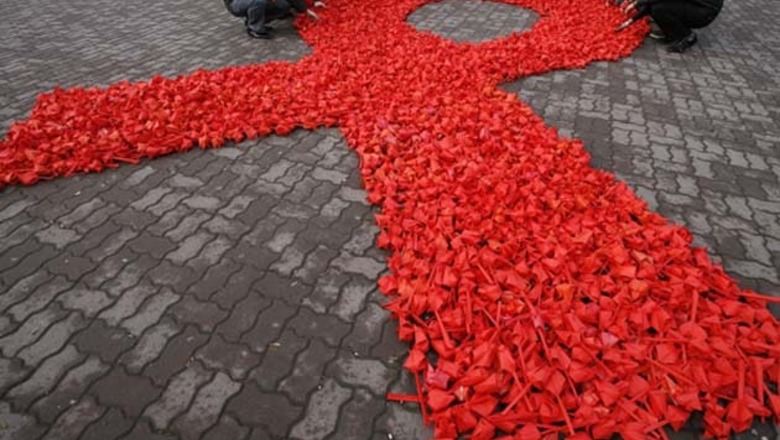
views
New York: While circumcision has been shown to lower a man's risk of contracting HIV through heterosexual sex, a new study indicates that the value of circumcision for gay and bisexual men remains questionable.
In a study of more than 1,800 men from the U.S. and Peru, researchers found that overall, the risk of contracting HIV over 18 months did not significantly differ between circumcised and uncircumcised men.
Over the study period, 5 percent of the 1,365 uncircumcised men became HIV-positive, as did 4 percent of the 457 circumcised men, according to findings published in the journal AIDS.
All of the men in the study reported having sex with other men and were considered to be at increased risk of HIV infection because they were already infected with the genital herpes virus (herpes simplex type 2), which can make people more susceptible to HIV.
Male circumcision is far more common in the U.S. than in most other countries, and 82 percent of the 462 American men in the study were circumcised, compared with just 6 percent of the 1,360 Peruvian men.
The researchers did find some hints that circumcision could be protective among men who primarily had insertive sex with other men. Among men who said they'd had insertive sex with their last three male partners at least 60 percent of the time, circumcision was linked to a 69 percent lower HIV risk.
That difference, however, was not statistically significant, which means the finding could be due to chance.
Taken together, the results "indicate no overall protective benefit from male circumcision" when it comes to male-to-male HIV transmission, write the researchers, led by Dr. Jorge Sanchez of the research organization Impacta Peru, in Lima.
They add that studies should continue to look at whether circumcision affects HIV risk from insertive sex and do so in larger, more diverse study groups.
In general, the researchers write, public-health messages for gay and bisexual men should "reinforce the importance of condom use for HIV prevention."
The findings may help inform debate over whether circumcision could stand as a weapon against HIV transmission among men who have sex with men.
In 2005 and 2006, three clinical trials in Uganda, South Africa and Kenya showed that circumcision can reduce a man's risk of HIV infection through heterosexual sex by up to 60 percent.
The World Health Organization now recommends medically supervised circumcision as one way to lower men's risk of HIV in countries where heterosexual transmission is common.
But the public-health value of circumcision in other countries, including the U.S., is a contentious issue. Most HIV infections in the U.S. are related to homosexual sex or IV drug use and studies have yet to find strong evidence that circumcision lowers HIV transmission among men who have sex with men.
Circumcision is thought to lower the heterosexual transmission of HIV and other sexually transmitted diseases through several mechanisms. One is by reducing the amount of mucosal tissue exposed during sex, which limits the viruses' access to the body cells they target.
Another theory is that the thickened skin that forms around the circumcision scar helps block the viruses' entry.
One reason circumcision might have little effect on homosexual HIV transmission is that it would have no impact on the risk from receptive anal sex.
Experts have also pointed out that in wealthier countries, many HIV-positive people are on powerful anti-viral drugs that reduce the risk of transmission, and any added effect of circumcision might be small.
Currently, the American Academy of Pediatrics does not recommend routine circumcision for newborns, citing insufficient evidence of overall health benefits.
The U.S. Centers for Disease Control and Prevention, meanwhile, is in the process of developing recommendations on adult and infant circumcision for lowering HIV risk.




















Comments
0 comment